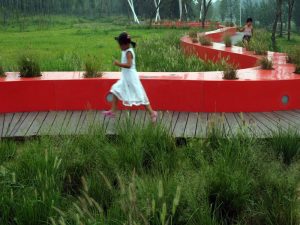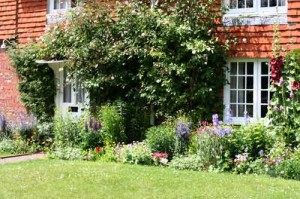Having criticized the lack of context-sensitive landscape architecture in China, it was a pleasure to find a contrary example: the Tanghe River Park Red Ribbon project:
- it is beautiful
- it is undeniably of its own time
- it is in sync with a long tradition of Chinese landscape architecture: the red colour, the dragon curves, the composition of walks with planting and water
So: well done to Professor Kongjian Yu of Turenscape 俞孔坚教授土人!
Old China had elegant concubines with bound feet strolling in lang corridors. New China can have fleet-of-foot girls bursting with energy as they race through the urban landscape.
Context-sensitive design is a problem for every country – or rather, one should say, for every region. Samuel Johnson remarked, on April 7th 1775, that patriotism is “the last refuge of a scoundrel”. Little did he know how nationalism was going to ravage civilization in the next two centuries. For landscape architecture, it is not so much that it should be “Chinese” in China as that it should be regional: there should be different approaches in Jiangsu, Guangdong and Xinjiang, relating to culture, climate, history, vegetation, geology, hydrology and habits concerning the social life of outdoor space. There can be no part of the world with such a severe shortage of landscape architects as China.
See also: landscape architecture competition for Tiananmen Square, Beijing, China 2009-2010



